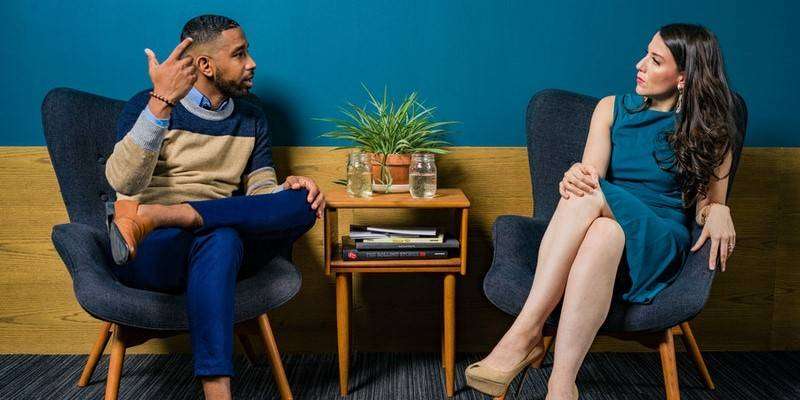Counseling Skills & Techniques
What is Counseling?
According to the American Counseling Association (ACA), professional counseling is the process of building relationships with individuals that empower them to accomplish mental health and wellness, education, and career goals. It is a collaborative relationship between the counselor and their client.
Professional counseling can take the form of:
- Individual counseling is the most common type of counseling that focuses on the growth and mental health of an individual.
- Couples or marriage counseling focuses on assisting couples in overcoming conflict and working towards a stronger relationship.
- Family counseling involves the different familial dynamics and how they affect the family structure.
- Group counseling is the use of group interaction to facilitate growth.
When you become a counselor, you are likely to engage in many of these types of counseling throughout your therapeutic work.

NYU Steinhardt School of Culture, Education, and Human Development
Master of Arts in Counseling for Mental Health and Wellness
Aspiring mental health counselors are prepared to pursue licensure with NYU Steinhardt’s MPCAC-accredited online counseling master’s. Students can earn their degree in as few as 21 mos. GRE not req.
- Prepare to become a mental health counselor
- Accredited by the MPCAC
- As few as 21 months to complete
- GRE not required

Graduate School of Education and Psychology
Master of Arts in Psychology
Pepperdine University’s online Master of Arts in Psychology program prepares students to pursue doctoral study or a career in human services.
- Open to all undergrad majors
- No GRE required
- Can be completed in about 18 months
The Process of Counseling
The traditional counseling process includes the following components.
Opening: The opening process is perhaps, one of the most important parts of the interaction with your client. It is your chance to get to know your client and for them to get to know you. It is also where you will set the tone for the rest of the therapeutic relationship.
Exploring Client Understanding: The exploration process is where you will begin to understand your client. You will explore their past and evaluate their current concerns. Here, you will together establish goals and set expectations.
Understanding: Important in developing a strong relationship with your client, you can demonstrate understanding by using verbal and nonverbal cues, as well as reflections and paraphrases.
Intervention: The intervention process is about choosing the appropriate counseling techniques that will encourage growth within your client.
Exploring Problems: Exploration is the process of learning more about your client and why they have come to counseling. Exploration is necessary in truly understanding a client’s thoughts and feelings in relation to their pressing problem.
Empower to Create Own Solutions: Empowering your client is not about providing them with all the answers. It is about empowering them, with your counseling skills, to find their own solutions.
(Back to Top)
Counseling Skills
As a student, your master’s degree in counseling is about developing and expanding upon the counseling skills that will best help your clients. These are some of the most important counseling techniques you are likely to use in your counseling sessions.
Listening/Observing: Listening is one of the most valuable counseling skills in the therapeutic relationship. It can be used in three ways:
- Attending: Attending is the ability to be physically present for the client. It means giving them your undivided attention and making appropriate eye contact, mirroring body language, and nodding. These attending behaviors show your client that you care. In fact, according to Kevin J. Drab, approximately 80% of communication takes place non-verbally.
- Active listening: Active listening occurs when you are listening with all of your senses. According to the Perinatal Mental Health Project, active listening involves listening with your body, heart, ears, eyes, and mouth.
- Verbal listening: This is a form of showing you are listening through the words that you use. These verbal cues are used to show attention and to encourage more exploration from the client. This can be as simple as ‘yes’, or ‘go on’. It can also be in the form of paraphrasing or repeating a word of emotion that the client has just said.
Asking Questions: Questions are helpful in the therapeutic environment because they allow you to learn more about your client. The type of questions that you ask will set the tone of the session and the entire counseling process. Questions occur in two forms.
- Closed: A closed question is the practice of asking a question that can be answered as a ‘yes’ or ‘no’. Closed questions should generally be avoided in the counseling relationship, as they do not encourage deeper exploration.
- Open: An open question is necessary to gather information. An open question is one that cannot be answered with a simple ‘yes’ or ‘no’ and it requires reflection or exploration on the client’s end. Every open question should be intentional and therapeutic.
Reflection: Reflections are used in the counseling process to accurately describe the client’s state from their verbal or nonverbal cues.
- Feelings reflections: Reflections allow clients to hear the feelings they have just expressed. Sometimes you have to look for the descriptive feeling in a client’s statement. It can also be helpful to look at a client’s nonverbal feeling cues.
- Restating/Rephrasing: Restating and rephrasing can build a stronger client therapist relationship. Rephrasing a client’s statement allows you to better understand what a client has just said and to gain further clarity, if you have gotten it wrong.
- Affirmation: Affirmation is a form of encouragement that is used to affirm behaviors or life choices. Affirmation is important for empowering clients. A few common affirmations include affirming progress that a client has made toward a goal or encouraging a client to do what is important to them.
Empathy: Empathy is the ability to put yourself in someone else’s shoes. It is much more than sympathy in that you are able to show your understanding of your clients feeling surrounding an experience.
Genuineness: Begin genuine is creating congruence between yourself and your words. Every therapist is different and will provide a different therapeutic process. It is important to remain genuine in all counseling techniques and verbal and nonverbal cues.
Unconditional Positive Regard: Demonstrating unconditional positive regard is the idea of accepting your client for who they are. It is a means of expressing warmth and respect.
Counselor Self-Disclosure: This is a tricky counseling skill to maneuver. A general rule to follow is to only share personal information that is beneficial to the therapeutic process. It might also be used to help the counselor relate better with their client.
(Back to Top)
Counseling Theories
Counseling theories are used as a guideline for understanding human nature and to determine which counseling skills you will use in your counseling sessions.
- Psychoanalytic Theory: This theory was originally developed by Sigmund Freud. It supports the idea that unconscious forces drive human actions. A psychoanalytic therapy session includes skills such as dream analysis, free association, resistance analysis, and transference analysis. Much of the personality is thought to have developed in childhood and similarities are identified and explored in the therapeutic relationship.
- Person-Centered Therapy: This theory is a form of psychotherapy originally developed by Carl Rogers. Sometimes also known as Rogerian therapy, it operates on the assumption that every human being has the ability to fulfil their full potential. A client-centered approach in the therapeutic relationship involves self-actualization, empathy, and unconditional positive regard. When practicing person-centered therapy, the client therapist relationship is very important because the positive interactions are a form of therapy themselves. The relationship should be supportive and the therapist acts more as a guide, as the client is the expert of their own life.
- Cognitive Behavioral Therapy (CBT): CBT is a shorter term approach to the therapeutic process. This hands-on approach lends its practice to the theory that human problems stem from faulty patterns of thinking. The counseling process primarily involves the challenge of automatic thinking and often negative thought patterns. It encourages the client to find logic in their way of thinking. The counselor plays an important role in challenging these thoughts.
- The Family Systems Model: Family Systems view all human troubles and conflicts as a familial unit. The theory, originally developed by Murray Bowen, is focused on the idea that family is the primary source of emotions and personality. A family system can be present in many forms, including structural, strategic, and intergenerational. Common techniques used in the therapeutic process include the creation of a genogram, family projection activities, emotional triangles, and the differentiation of self. This counseling theory is often used in marriage and family counseling sessions.
Counseling is about creating strong relationships with your clients that will empower them to obtain mental health and to fulfill their goals. Through the use of intentional counseling techniques and an understanding of human nature developed through counseling theories, you can guide your client in reaching optimal mental health.
Last updated: April 2020




